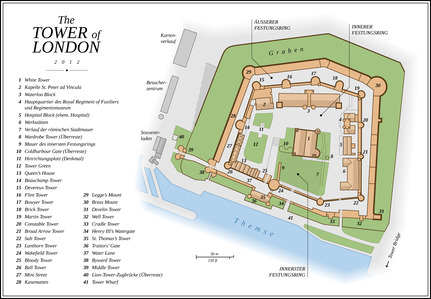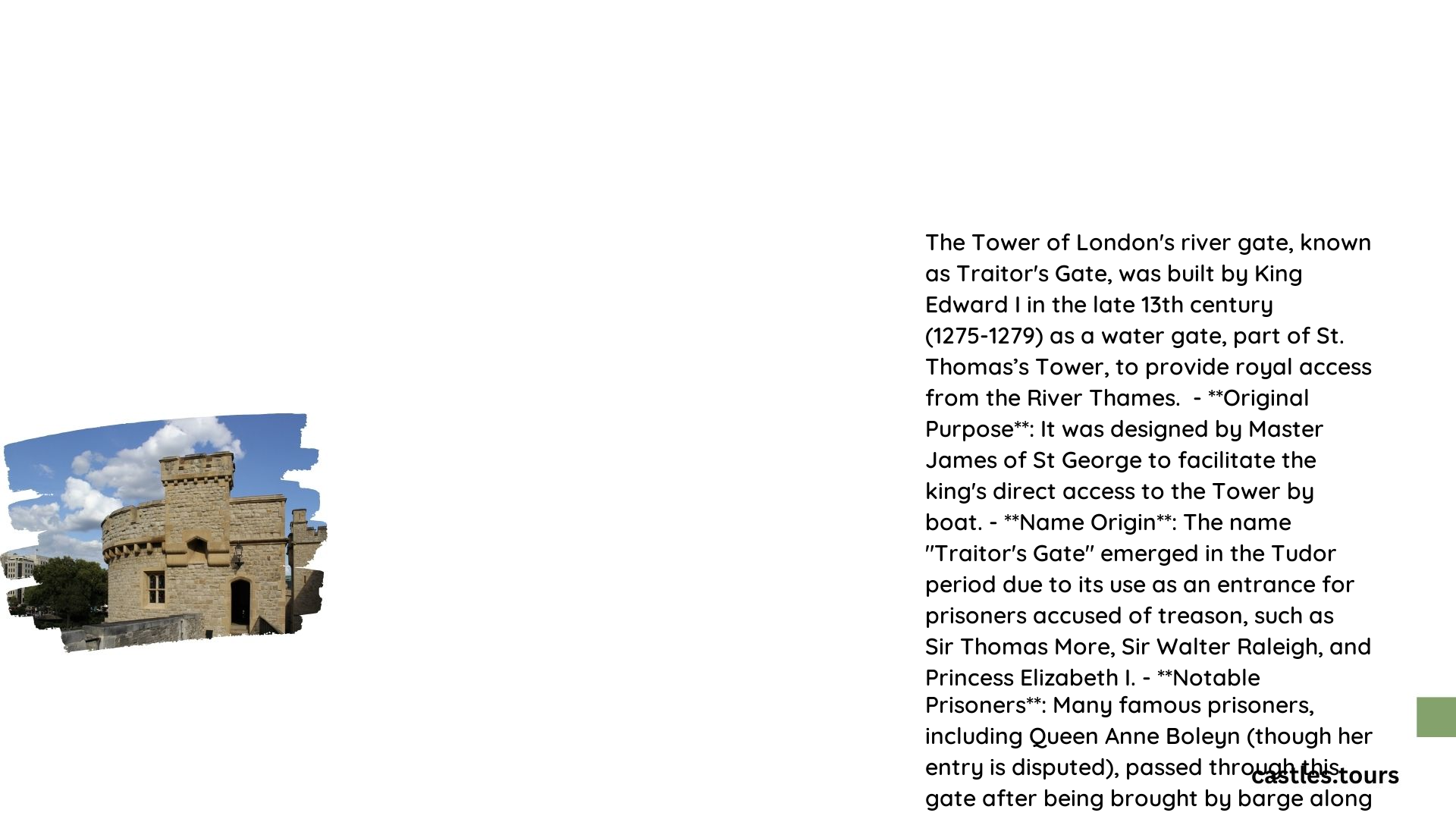The Tower of London River Gate, more commonly known as Traitors’ Gate, is a water entrance to the Tower of London built in the late 1270s by King Edward I. Initially serving as a royal entrance, it gained notoriety as the passage through which prisoners accused of treason were brought into the Tower. This infamous gate has witnessed the passage of notable figures such as Sir Thomas More, Sir Walter Raleigh, and Elizabeth I before her ascension to the throne.
What is the Historical Significance of the Tower of London River Gate?

The Tower of London River Gate, or Traitors’ Gate, holds immense historical importance due to its role in the Tower’s history. Here are key points highlighting its significance:
- Royal Entrance: Originally constructed as a water gate for royal use
- Prisoner Passage: Became infamous for admitting prisoners accused of treason
- Psychological Impact: The journey through the gate was designed to intimidate prisoners
- Notable Prisoners: Witnessed the passage of significant historical figures
The gate’s transformation from a royal entrance to a symbol of impending doom for prisoners reflects the changing nature of the Tower itself over centuries.
How Was the Tower of London River Gate Constructed?

The construction of the Tower of London River Gate was a significant architectural feat for its time:
- Built in the late 1270s under King Edward I’s reign
- Part of St. Thomas’s Tower complex
- Designed as a water gate entrance to the Tower
- Allowed direct access from the River Thames
The gate’s construction demonstrates the strategic importance of river access to the Tower, both for royal convenience and later for secure prisoner transport.
What Are the Key Features of the Tower of London River Gate?
The Tower of London River Gate possesses several distinctive features:
| Feature | Description |
|---|---|
| Archway | Large stone arch allowing boat passage |
| Portcullis | Heavy iron grate that could be lowered for defense |
| Steps | Stone steps leading from water level into the Tower |
| Decorative Elements | Ornate stonework reflecting its initial royal purpose |
These features combined functionality with imposing architecture, serving both practical and psychological purposes in the gate’s various roles throughout history.
How Did the Tower of London River Gate Earn Its Infamous Reputation?
The transformation of the Tower of London River Gate into the dreaded Traitors’ Gate occurred gradually:
- Shift in Purpose: From royal entrance to prisoner admission point
- Name Change: First referred to as “Traitors’ Gate” before 1543
- Notable Prisoners: High-profile individuals brought through the gate
- Symbolic Journey: Passage under London Bridge, past displayed heads of executed prisoners
The gate’s reputation grew with each notable prisoner, cementing its place in popular imagination as a point of no return for those accused of treason.
Who Were Some Famous Prisoners Brought Through the Tower of London River Gate?
Several historically significant figures passed through the Tower of London River Gate, including:
- Sir Thomas More: Lord Chancellor to Henry VIII, executed in 1535
- Anne Boleyn: Second wife of Henry VIII, executed in 1536
- Sir Walter Raleigh: Explorer and writer, imprisoned multiple times
- Princess Elizabeth: Future Queen Elizabeth I, imprisoned by her half-sister Mary I
Each of these individuals’ journeys through the gate marked significant moments in English history, contributing to the gate’s infamous legacy.
How Can Visitors Experience the Tower of London River Gate Today?
Modern visitors can experience the Tower of London River Gate in several ways:
- Tower of London Tours: General admission includes viewing the gate
- Exterior Views: Visible from outside the Tower complex
- River Thames Boat Tours: Offers a perspective similar to historical approaches
- Special Events: Occasional historical reenactments and themed tours
Visitors should note that while the gate itself is not accessible, its view and historical context are integral parts of the Tower of London experience.
What Are the Practical Details for Visiting the Tower of London River Gate?
For those planning to visit the Tower of London and see the River Gate, here are essential details:
- Opening Hours: Generally 9:00 AM to 5:30 PM (last entry 4:00 PM)
- Admission: Included in general Tower of London ticket
- Best Time to Visit: Early morning or weekdays to avoid crowds
- Photography: Allowed, but restrictions may apply in certain areas
- Accessibility: Limited for those with mobility issues due to historic nature of site
It’s advisable to check the official Tower of London website for current information, as hours and policies may change seasonally or due to special events.
How Has the Tower of London River Gate Been Portrayed in Popular Culture?
The Tower of London River Gate has captured the imagination of artists, writers, and filmmakers:
- Literature: Featured in historical novels and non-fiction works
- Film and Television: Depicted in period dramas and documentaries
- Art: Subject of paintings and engravings throughout history
- Tourism: Highlighted in guidebooks and travel literature
These portrayals have often emphasized the gate’s ominous reputation, contributing to its enduring place in public consciousness as a symbol of royal power and punishment.
The Tower of London River Gate remains a compelling testament to England’s complex history, offering visitors a tangible link to centuries of royal intrigue, political machinations, and personal tragedies. Its evolution from a royal entrance to the infamous Traitors’ Gate encapsulates the changing role of the Tower itself, from palace to prison to modern-day museum and UNESCO World Heritage site.
References:
1. Wikipedia – Tower of London
2. Atlas Obscura – Traitors’ Gate
3. Wikipedia – Traitors’ Gate
